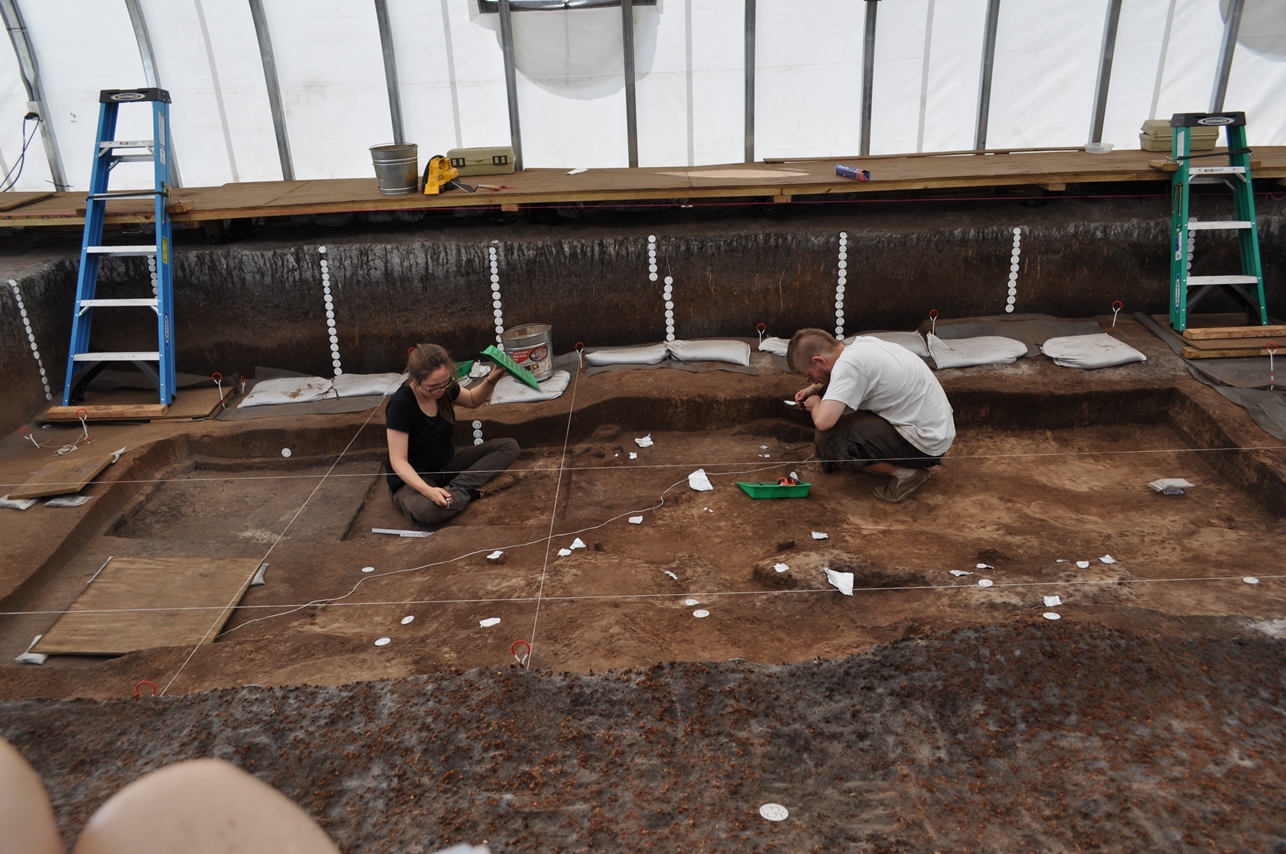FAU Joins Archaeological Project in Vero Beach
Florida Atlantic University is now partnering with the Old Vero Ice Age Sites Committee on one of the oldest and largest archaeological digs of its kind.

Archaeologists working at the Old Vero Man site in Vero Beach, Florida.
Florida Atlantic University is now partnering with the Old Vero Ice Age Sites Committee (OVIASC) on one of the oldest and largest archaeological digs of its kind, The Old Vero Man site, located on the Treasure Coast in Vero Beach. The project will be overseen by FAU’s Harbor Branch Oceanographic Institute (HBOI) and FAU’s Department of Anthropology within the Dorothy F. Schmidt College of Arts and Letters.
“This Florida site has national and international significance,” said Daniel C. Flynn, Ph.D., FAU vice president for research. “As one of the state’s 12 public universities, FAU brings tremendous resources and infrastructure to this important project.”
For the past two years, excavation efforts have been led by renowned archaeologists James M. Adovasio, Ph.D. and Andy Hemmings, Ph.D., who will continue managing the dig under the new partnership agreement. The Old Vero Man site has been called one of the most important finds in the history of North American archaeology, after construction efforts on a drainage canal in 1913 exposed the well-preserved remains of Late Pleistocene flora and fauna in association with human remains and artifacts.
“This site tells the story of the first Floridians,” said Adovasio. “As a taxpayer-funded project, it is important to educate the public on the importance of this site, as it gives us invaluable insight into Florida’s role in ancient history.”
The Old Man Vero project has been overseen since 2010 by the OVIASC. The group conducts regular tours during active digs, coordinates volunteers who assist archaeologists on-site and works to raise funding for the project.
“We’ve had two very exciting and productive years on this site,” said Randy Old, OVIASC chair. “We are thankful for the work that was conducted by Mercyhurst University, and are anticipating even more great things to come from this new partnership with Florida Atlantic University at the helm.”
Other collaborators on the project include scientists in HBOI’s ancient DNA lab who will process some of the recovered bones, and Indian River State College will be providing ancient DNA soil analysis and student volunteers. Site preparations will begin in January 2016 and archaeologists will begin digging again in February. For more information, contact Carin Smith at 772-242-2230 or carinsmith@fau.edu.
Florida Atlantic University is now partnering with the Old Vero Ice Age Sites Committee (OVIASC) on one of the oldest and largest archaeological digs of its kind, The Old Vero Man site, located on the Treasure Coast in Vero Beach. The project will be overseen by FAU’s Harbor Branch Oceanographic Institute (HBOI) and FAU’s Department of Anthropology within the Dorothy F. Schmidt College of Arts and Letters.
“This Florida site has national and international significance,” said Daniel C. Flynn, Ph.D., FAU vice president for research. “As one of the state’s 12 public universities, FAU brings tremendous resources and infrastructure to this important project.”
For the past two years, excavation efforts have been led by renowned archaeologists James M. Adovasio, Ph.D. and Andy Hemmings, Ph.D., who will continue managing the dig under the new partnership agreement. The Old Vero Man site has been called one of the most important finds in the history of North American archaeology, after construction efforts on a drainage canal in 1913 exposed the well-preserved remains of Late Pleistocene flora and fauna in association with human remains and artifacts.
“This site tells the story of the first Floridians,” said Adovasio. “As a taxpayer-funded project, it is important to educate the public on the importance of this site, as it gives us invaluable insight into Florida’s role in ancient history.”
The Old Man Vero project has been overseen since 2010 by the OVIASC. The group conducts regular tours during active digs, coordinates volunteers who assist archaeologists on-site and works to raise funding for the project.
“We’ve had two very exciting and productive years on this site,” said Randy Old, OVIASC chair. “We are thankful for the work that was conducted by Mercyhurst University, and are anticipating even more great things to come from this new partnership with Florida Atlantic University at the helm.”
Other collaborators on the project include scientists in HBOI’s ancient DNA lab who will process some of the recovered bones, and Indian River State College will be providing ancient DNA soil analysis and student volunteers. Site preparations will begin in January 2016 and archaeologists will begin digging again in February. For more information, contact Carin Smith at 772-242-2230 or carinsmith@fau.edu.
-FAU-
Tags: harbor branch | technology | arts and letters | science